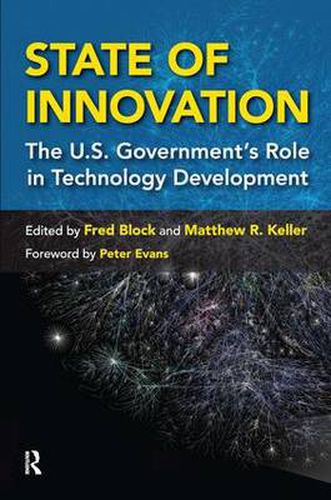Readings Newsletter
Become a Readings Member to make your shopping experience even easier.
Sign in or sign up for free!
You’re not far away from qualifying for FREE standard shipping within Australia
You’ve qualified for FREE standard shipping within Australia
The cart is loading…






Since the election of Ronald Reagan in 1980, American politics has been dominated by the idea that free markets are the most effective way to organize economic activity. Private firms, disciplined by the competitive rigors of the market, are forced to innovate, adapt, and become more efficient in order to outpace rivals, continuously satisfy consumers, and meet new demands. Government, in this view, is the problem : regulation, taxation, and policy interventions disrupt open competition, stifle innovation, and breed inefficiency.But the dirty secret behind the facade of the Washington consensus is that over the last four decades, government programs and policies have quietly become ever more central to the American economy. From basic research to commercialization, the fingerprints of government can be found in virtually every major industrial success story of the late 20th and early 21st century.This volume provides the first comprehensive account of the depth, magnitude, and structure of the U.S. government’s role in the innovation economy. A cross-disciplinary group of authors collectively document, theorize, and evaluate the decentralized set of agencies, programs, and policies at the core of the collaborative linkages between public agencies and the private industries at the forefront of the U.S. economy. Equally important, as the U.S. seeks to recover from the worst economic crisis since the Great Depression, the volume addresses issues critical to the construction of newly responsible, forward-looking public policies: how can we forge an innovation policy that is at once flexible, effective and efficient, as well as transparent and accountable?
$9.00 standard shipping within Australia
FREE standard shipping within Australia for orders over $100.00
Express & International shipping calculated at checkout
Since the election of Ronald Reagan in 1980, American politics has been dominated by the idea that free markets are the most effective way to organize economic activity. Private firms, disciplined by the competitive rigors of the market, are forced to innovate, adapt, and become more efficient in order to outpace rivals, continuously satisfy consumers, and meet new demands. Government, in this view, is the problem : regulation, taxation, and policy interventions disrupt open competition, stifle innovation, and breed inefficiency.But the dirty secret behind the facade of the Washington consensus is that over the last four decades, government programs and policies have quietly become ever more central to the American economy. From basic research to commercialization, the fingerprints of government can be found in virtually every major industrial success story of the late 20th and early 21st century.This volume provides the first comprehensive account of the depth, magnitude, and structure of the U.S. government’s role in the innovation economy. A cross-disciplinary group of authors collectively document, theorize, and evaluate the decentralized set of agencies, programs, and policies at the core of the collaborative linkages between public agencies and the private industries at the forefront of the U.S. economy. Equally important, as the U.S. seeks to recover from the worst economic crisis since the Great Depression, the volume addresses issues critical to the construction of newly responsible, forward-looking public policies: how can we forge an innovation policy that is at once flexible, effective and efficient, as well as transparent and accountable?